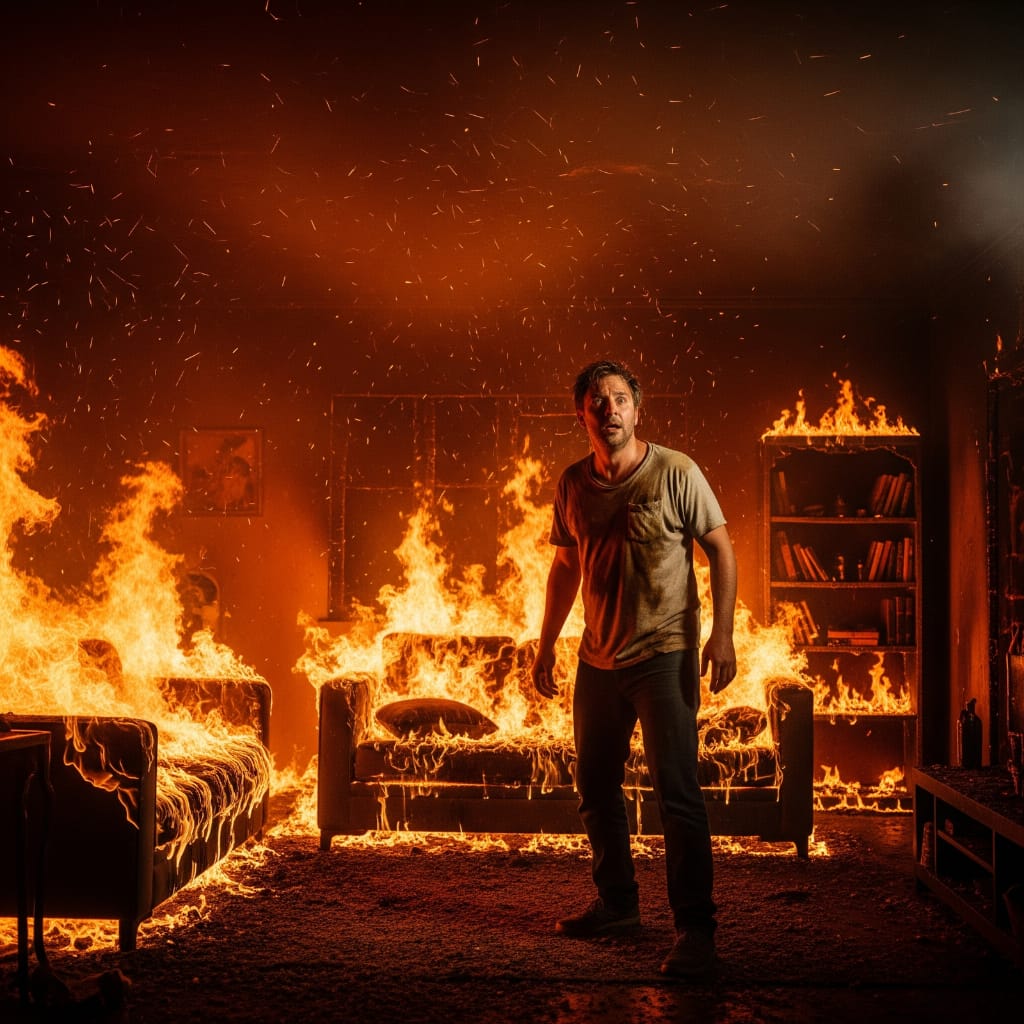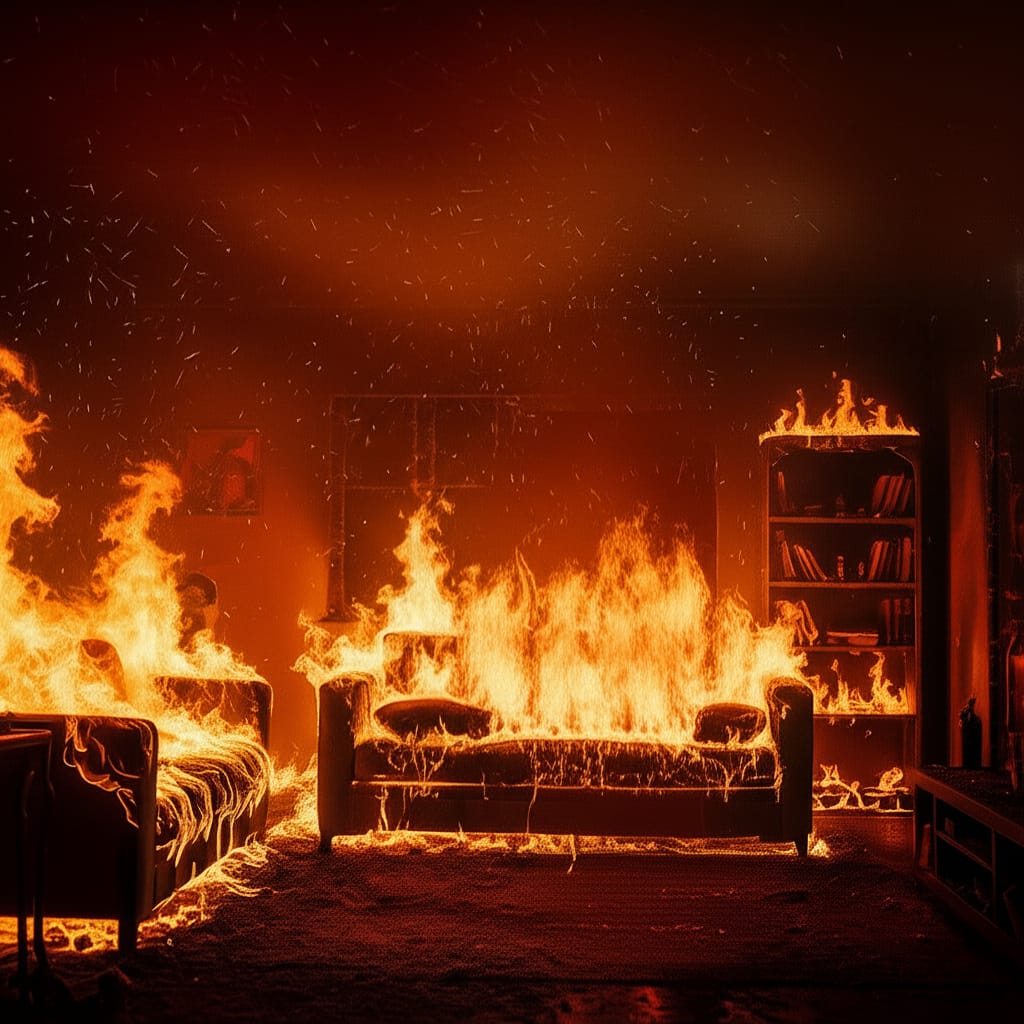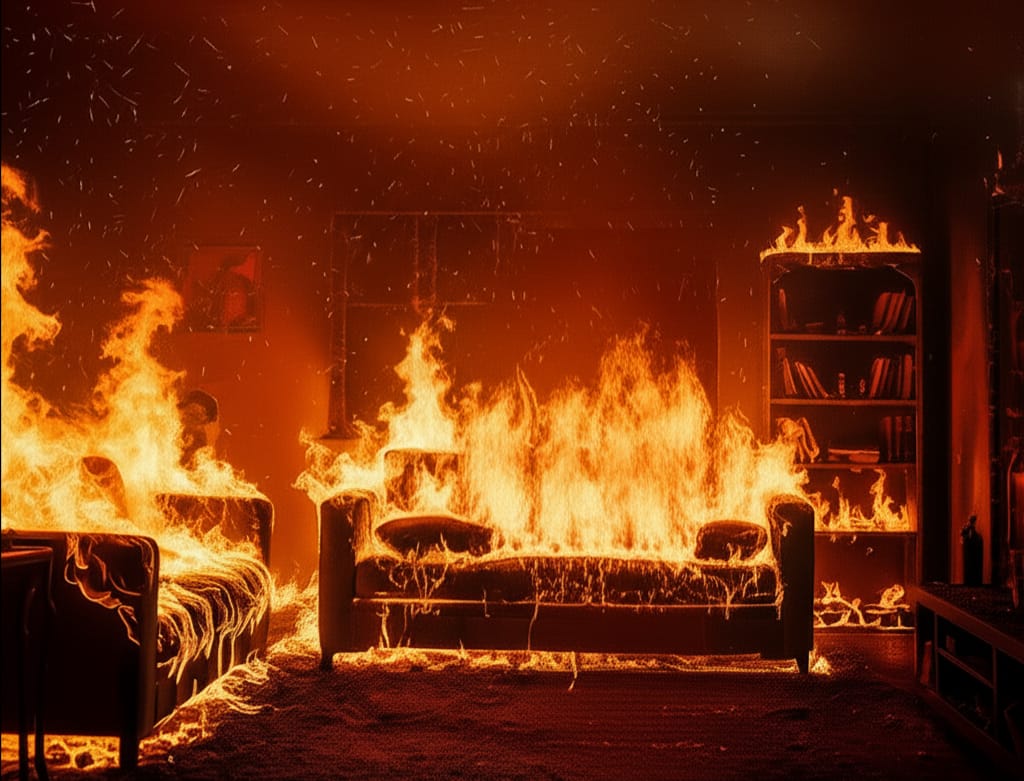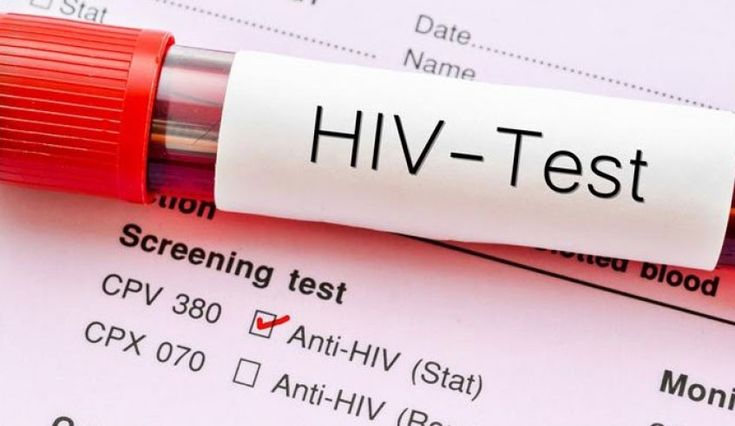A house fire or building blaze is one of the deadliest emergencies you can face. Flames spread fast, smoke fills rooms within minutes, and toxic gases can overwhelm before you even see the fire. Experts agree that survival comes down to preparation, calm action, and knowing the right steps to take. The difference between panic and a plan could save your life.
1. React immediately
Don’t ignore alarms or signs of danger. When a fire breaks out, seconds matter. If you hear the smoke alarm or smell smoke, treat it as a real emergency. Don’t stop to collect belongings — your focus must be on escaping as quickly as possible.
2. Stay low and avoid smoke
Most fire deaths are caused by smoke inhalation, not flames. Experts advise dropping to your hands and knees and crawling beneath the smoke, where the air is clearer. Cover your nose and mouth with a cloth if possible to reduce toxic inhalation.
3. Check doors before opening
Before opening any door, touch it with the back of your hand. If it feels hot, do not open it — flames could be on the other side. If it’s cool, open slowly and be ready to close it quickly if you see smoke or fire. Always know at least two exits in any building.

4. Use the safest exit route
Leave immediately through the nearest safe exit. Do not use elevators — fire can cause them to fail. If stairways are clear, use them. If you can’t leave safely, go to a room with a window, close the door, and signal for help.
5. Stop, Drop, and Roll
If your clothing catches fire, do not run. Running fuels the flames with oxygen. Instead, stop where you are, drop to the ground, and roll back and forth to smother the flames. Cover your face with your hands while rolling.
6. Call for help once safe
Once outside, move away from the building and never go back inside for belongings or pets. Call emergency services immediately. Firefighters are trained and equipped to handle rescues — re-entering is the biggest cause of fire-related deaths.

7. Prevention and preparedness
Experts stress that prevention is the best survival strategy. Install working smoke alarms in your home and test them monthly. Create a fire escape plan with your household, practice it regularly, and keep essentials like a flashlight and fire extinguisher easily accessible.
The golden sequence: REACT → STAY LOW → ESCAPE → CALL.
Having a clear plan and acting fast can mean the difference between survival and tragedy. Fire spreads faster than most people realize — but with knowledge and preparation, you can greatly increase your chances of getting out alive.






